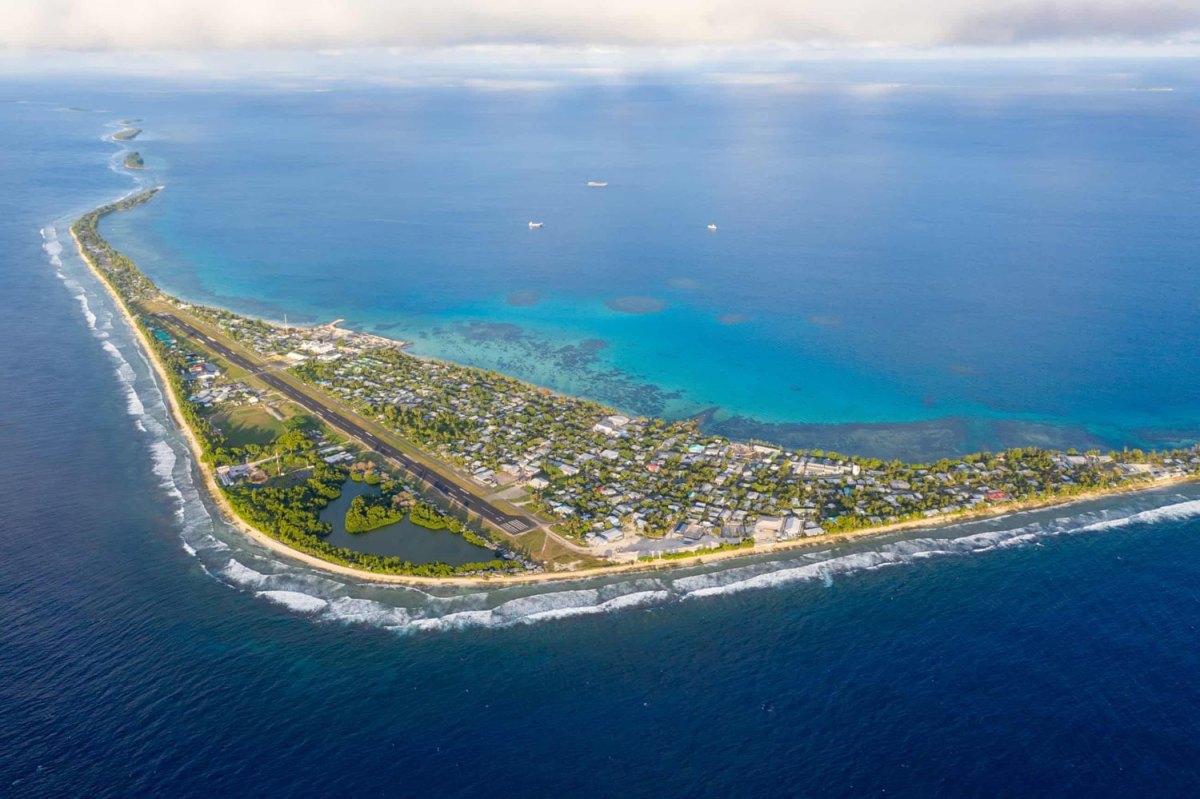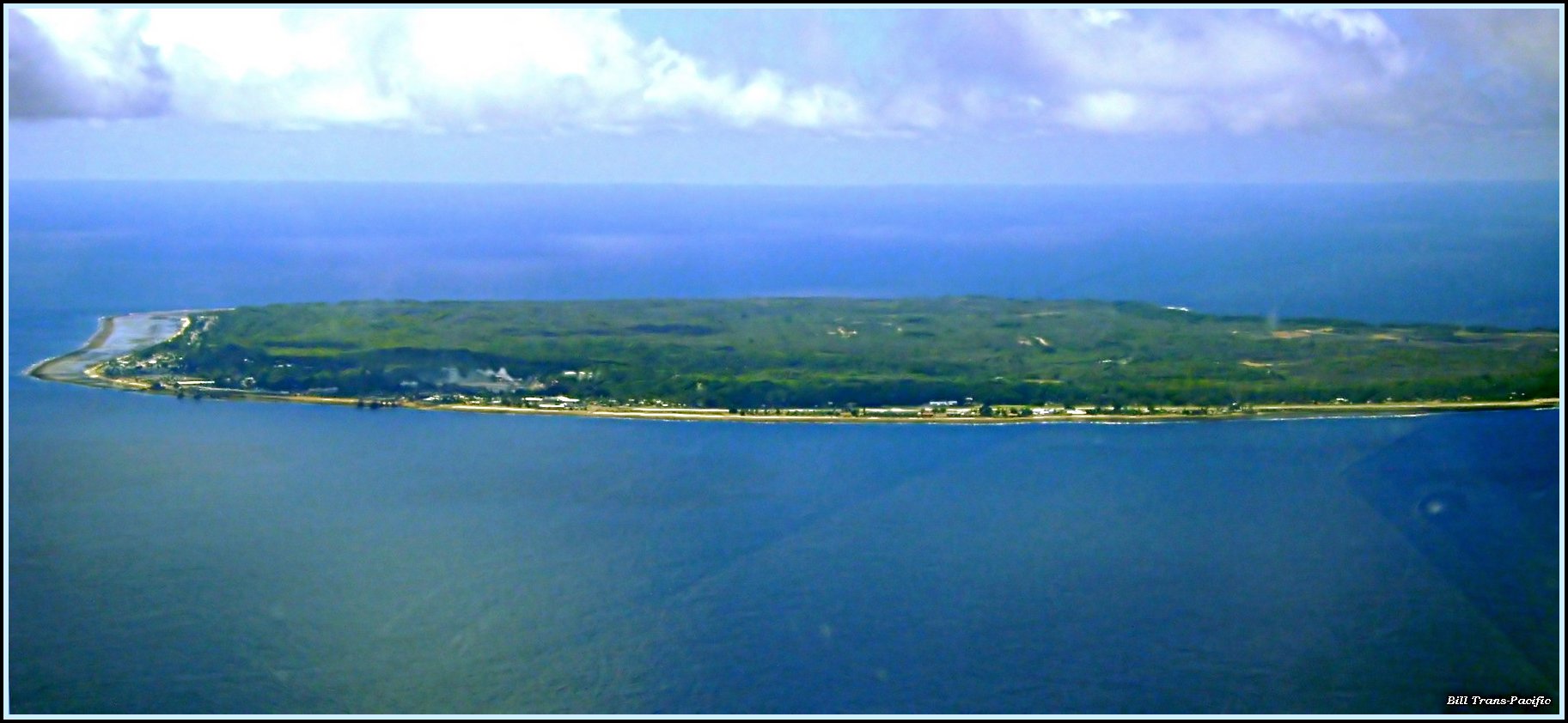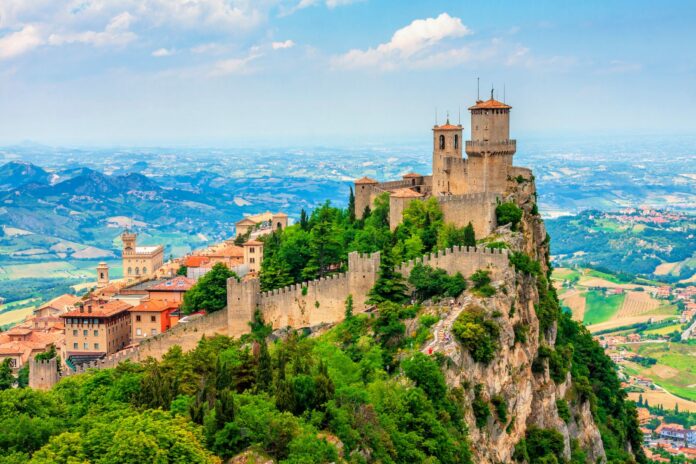Among the continental expanses and amidst the vast oceans of our planet, there exists a vast number of countries. Adjacent to the large territories of superpowers lie countries with extremely tiny areas. Some of them, despite their small size, play a significant role in the global economy, politics, and culture. In our overview, we’ll explore the 5 smallest countries in the world by land area.
Republic of San Marino:
Area: 60.57 km²
Population: 33,422 people
The oldest state in Europe. Unofficially, San Marino Independence Day is considered to be September 3, 301 AD. According to ancient legend, it was in this year that a member of the Christian community from the island of Rab built himself a hermitage on the summit of Mount Titano.
The republic shares borders only with Italy. It can be reached only by bus or car. The country has no access to the sea, and there is also no railway connection.
Despite the fact that rocks occupy about 80% of its already small area, San Marino is a fairly wealthy country. Its GDP per capita is one of the highest in the world. The revenue part of the budget is formed by tourism, agriculture, and the sale of postage stamps (25% of all revenues).
The country has only 30 settlements, but it has its own army and football team. There is even its own calendar in the Republic. Obtaining citizenship in the state is very difficult; an applicant must reside in San Marino for a minimum of 30 years.
The most visited city in the country is its capital. All the buildings in the central part of San Marino City are unique historical and architectural monuments, listed as UNESCO World Heritage Sites. The ancient fortress of Guaita, located at the very top of Mount Titano, is particularly popular with tourists. The historical part of the capital is a pedestrian zone; motor vehicle traffic is prohibited here.
Tuvalu
Area: 26 km²
Population: 11,206 people
A tiny Pacific island country in Polynesia. It was discovered by Spanish explorer Alvaro de Mendaña y Neira in 1568. Until 1975, the archipelago was called the Ellis Islands and was a British colony. After gaining independence in 1978, the country was renamed Tuvalu.

The territory of the state consists of 3 coral islands, 5 atolls, and 1 atoll-reef island. About 95% of the country’s inhabitants are indigenous Tuvaluan Polynesians. The most densely populated of them is the Funafuti atoll (the capital of Tuvalu). About 47% of the country’s population lives here. Funafuti is home to the country’s airport, where flights from Fiji operate twice every 10 days. The main attraction of the country is the Tuvalu Church.
About 2,000 tourists visit the country annually. The pristine ocean waters, white sandy beaches, and incredible air attract enthusiasts of exotic secluded vacations and divers.
Republic of Nauru
Area: 21.3 km²
Population: 11,359 people
The territory of the state is the eponymous island located 42 km south of the equator. The first settlements appeared here over 1,000 years ago. The first European to set foot on Nauru was an Englishman named John Fearn. He named the newly discovered land “Pleasant Island.” That’s what this island nation was called for 90 years.

Throughout its history, Nauru was a colony of Germany, Australia, and Japan. For several years, it was under the control of a union of three countries: New Zealand, Australia, and Great Britain. In 1968, the Republic of Nauru became an independent state, and since 1999, it has been a member of the United Nations. The republic has no official capital; the central city is considered to be Yaren.
Until the early 20th century, the republic was known for its huge phosphate mining volumes. Over time, the phosphate reserves were depleted, and mining operations practically ceased.
Tourism in Nauru is underdeveloped. The only airport is located in the largest city, Yaren. Charter flights from Fiji, New Zealand, Australia, and the Republic of Kiribati operate here. You can also reach the wonderful, clean, and sparsely populated coastline by small yacht.
Principality of Monaco
Area: 2.02 km²
Population: 37,863 people
The smallest and most densely populated country in the world is located on the shores of the Ligurian Sea, in the southern part of Europe. The only country with which Monaco shares a land border is France. The principality is so small that you can walk around it and see its main attractions in just 60 minutes.
The country has established railway, maritime, air, and road connections. The main (and only) railway station in Monaco – Monte Carlo – is underground, as is most of the railway network. There are 2 ports and 1 heliport on the territory of the state. Flights here are operated from Nice.
The first settlers in the country were the Phoenicians, who settled here from the 10th century BC. The history of the principality begins with the formation of a colony of the Republic of Genoa and the construction of a fortress (1215). The state became independent on January 8, 1297 – the date of the capture of the fortress by F. Grimaldi. Since then, many centuries have passed, but representatives of the Grimaldi dynasty still rule the principality.
The tiny state is a popular destination among celebrities and billionaires. For 300 days a year, the weather here is warm and cloudless. The most visited area by tourists is Monte Carlo. It is famous for its luxurious hotels, expensive boutiques, casinos, and banks (with more than 50 branches of various banking institutions). This area is often used as a filming location. Monte Carlo was featured in Hollywood movies like “GoldenEye” and “Heartbreaker.”
Vatican City
Area: 0.44 km²
Population: 825 people
The enclave state ranks 194th on the list of countries. Located in the heart of the capital of Italy, 95% of its population are clergy members. Vatican City boasts the world’s shortest railway (with a track length of 900 meters) and the fastest postal service (sending out an average of 20,000 packages, 7 million postcards, and 2.5 million letters annually).
On its tiny territory, you’ll find the main Christian sanctuaries, numerous museums, masterpieces of artistic and architectural excellence, the Pope’s residence, and the enigmatic Vatican Library.
The magnificent St. Peter’s Basilica towers over all buildings, its dome seemingly floating in the heavens. The most popular attraction is the Sistine Chapel. Visitors spend hours examining it, trying to capture every detail in their memories. Photography and videography inside the Sistine Chapel are prohibited. Vatican City is the only country in the world with a 0% birth rate.
